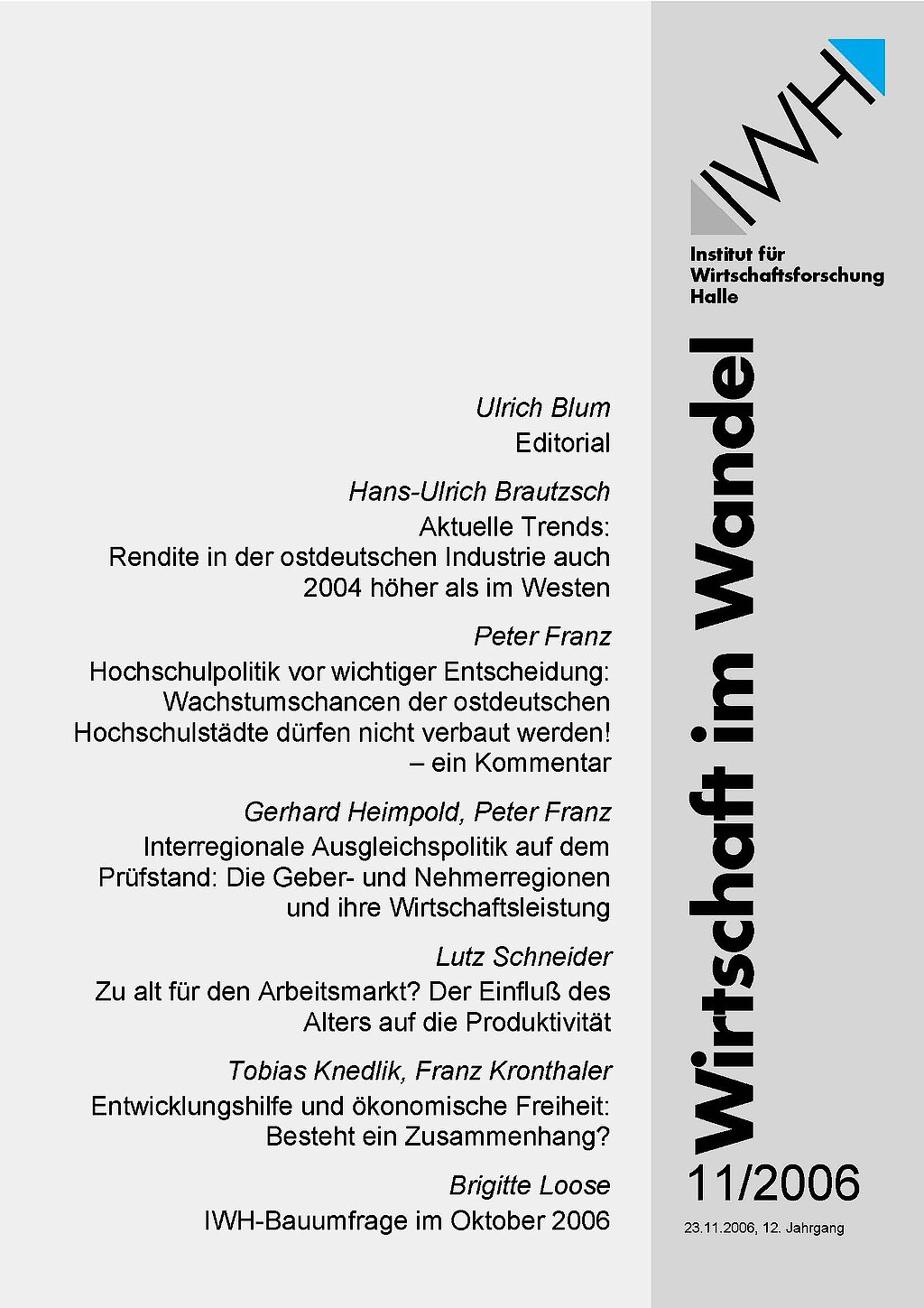in: Wirtschaft im Wandel,
No. 11,
2006
Die Zukunft interregionaler Ausgleichspolitik wird derzeit intensiv diskutiert. Während in der Vergangenheit das Interesse der Ausgleichspolitik primär den Nehmerregionen und den dort erzielten Wirkungen galt, richtet sich neuerdings der Blick auch auf die „Geber“. Bei letzteren werden wachstumsdämpfende Entzugseffekte befürchtet, die angesichts rückläufiger gesamtwirtschaftlicher Wachstumsraten Anlaß böten, über die Zukunft der Ausgleichspolitik nachzudenken. Das IWH hat sich zusammen mit zwei Projektpartnern in diese Debatte durch eine Untersuchung eingebracht, die im Auftrag des Bundesamtes für Bauwesen und Raumordnung durchgeführt wurde. Im folgenden werden vom IWH gewonnene Befunde wiedergegeben, wie Nehmerund Geberregionen hinsichtlich ihrer Wirtschaftsleistung dastehen und welche Entwicklungsmuster sich im Zeitverlauf zeigen. Bezüglich des Niveaus der Wirtschaftsleistung, die am Bruttoinlandsprodukt (BIP) je Einwohner gemessen wurde, zeigt sich erwartungsgemäß, daß die Geberregionen, allesamt westdeutsche Regionen, im Zeitraum 1992-2003 ein überdurchschnittliches BIP je Einwohner aufweisen; die Nehmerregionen, und zwar sowohl die ost- als auch (weniger stark) die westdeutschen dagegen ein unterdurchschnittliches. Bezüglich der Entwicklung der Wirtschaftsleistung, die anhand der Veränderungen beim relativen BIP je Einwohner (BIP je Einwohner der betreffenden Region in Relation zum Bundesdurchschnitt) gemessen wurde, zeigt sich, daß die ostdeutschen Nehmerregionen zunächst stark aufholen konnten, sich dieser Aufholprozeß jedoch nach 1998 deutlich abgeschwächt hat. Spiegelbildlich hat sich der Vorsprung der Geberregionen gegenüber dem bundesdurchschnittlichen BIP je Einwohner verringert, d. h., deren relatives BIP pro Kopf ging insgesamt zurück. Absolut gesehen stieg es jedoch. Eine ganze Reihe ostdeutscher Regionen, die 1992-1998 wachstumsstark waren, konnte diese Entwicklung danach nicht fortsetzen. Umgekehrt gehörte eine größere Zahl westdeutscher Regionen, die 1992-1998 ein stagnierendes oder rückläufiges relatives BIP je Einwohner aufwiesen, danach wieder zu den wachstumsstarken Räumen. Zusätzlich wurden die Beiträge der Regionen zum absoluten Zuwachs des BIP im Zeitraum 1998-2003 ermittelt: 30 von 271 Regionen erbringen etwa die Hälfte des gesamtwirtschaftlichen BIP-Zuwachses, davon sind 28 in Westdeutschland gelegen, 21 von ihnen sind Geberregionen. Dies spricht dafür, daß die Politik dafür sorgen sollte, den Regionen, die am meisten zur Zunahme der gesamtwirtschaftlichen Leistung beitragen (und damit die wirtschaftlichen Grundlagen für die interregionale Ausgleichspolitik schaffen), weiterhin günstige Entwicklungsbedingungen zu sichern.





